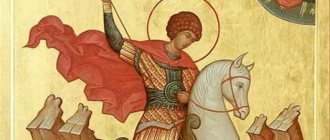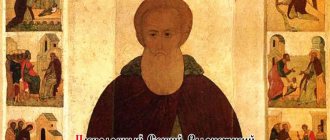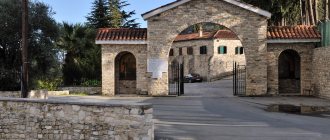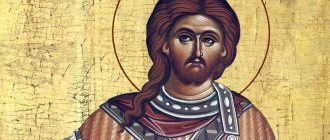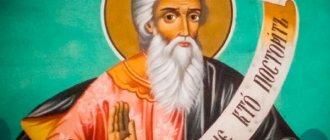Life of Theodore Ushakov
Theodore was born on February 13, 1745 into a poor family of a noble family, in the village of Burnakovo, Yaroslavl province. Fyodor's father and uncle served in the Preobrazhensky Regiment in St. Petersburg. Since childhood, the boy was distinguished by his courage and ability to not lose his composure even in times of danger. But in ordinary life, Fedor had a modest and meek character.
At the age of 16, he entered the St. Petersburg Naval Cadet Corps, after which he became a midshipman in the Baltic Fleet. Later he was transferred to the Azov flotilla. In 1783, captain of the second rank Fyodor Ushakov moved to Kherson, where the construction of the fleet began.
At that time, the plague epidemic began, Fyodor Ushakov fought it in his own way in his team. The team was divided and placed in separate tents at a distance from each other, the medical tent stood in the distance. When a sick person was identified, his tent was burned. Thanks to such measures, the epidemic in his team ended earlier and took fewer lives. For this, Fyodor Ushakov was awarded the Order of St. Vladimir, 4th degree.
After the annexation of Crimea to Russia, Captain 1st Rank Fyodor Ushakov arrived there. In 1787, during the war with Turkey, Fyodor Ushakov led the vanguard of the Sevastopol squadron. In 1791, the Russian-Turkish war ended with the brilliant victory of Ushakov at Cape Kaliakria. Russian ships under the command of Ushakov, surrounding the enemy, literally bombarded him with cannonballs. The Turkish Sultan was stunned by the spectacle he saw, and hastened to make peace with Russia. The Turks began to be very afraid of Fyodor Ushakov and nicknamed him: “Ushak Pasha.” For his brilliant successes in battles against the Turkish fleet, Fyodor Ushakov received the rank of rear admiral and was appointed commander of the Black Sea Fleet.
In 1796, Paul I became Emperor of Russia. A few years earlier, Napoleon Bonaparte became Emperor in France, who set out to conquer the whole world. He has already captured several European countries. Russia conducted military operations against the French together with Turkey. Vice Admiral Ushakov was appointed commander of their combined naval forces. In 1798, the Russian-Turkish fleet liberated the Ionian Islands along the coast of Greece from the French, but one island of Corfu with an impregnable fortress remained untaken. However, Russian sailors under the command of Ushakov, after a siege and a 1-day assault, took Corfu.
For the capture of Corfu, Fedor Fedorovich Ushakov was promoted to admiral. After this, the Russian fleet under the command of Admiral Ushakov accomplished many more glorious feats and won many victories. Soon Admiral Ushakov was transferred and appointed chief commander of the Baltic Rowing Fleet. At this time, he did a lot of charity work, helping those in need.
On December 19, 1806, Admiral Ushakov submitted his resignation. He left the capital and settled in the village of Alekseevka near the Sanaksar Nativity of the Mother of God Monastery. He often went to the monastery to pray, on all Sundays and holidays.
Admiralty
Emperor Paul I, who ascended the throne after the death of Catherine, awarded Fyodor Ushakov the rank of admiral and plenipotentiary representative of Russia in the future republic of the Seven United Islands, which later became Greece.
Hagiographic icon of the holy warrior Theodore Ushakov
The reign of the wise representative was accompanied by peace, silence and tranquility. Supporting the military land actions of the Russians under the leadership of Suvorov, the sailors defeated the French in Bari, after which a prayer service was served at the relics of Nicholas the Savior.
After the liberation of Malta, by order of the emperor, the Black Sea squadron returned to Sevastopol.
The year was 1800, and a year later, as a result of a coup, Alexander I ascended to the throne of the Russian Empire, changing the fate of the Russian navy.
After being transferred as commander of the Baltic Fleet, Fyodor Fedorovich lived in St. Petersburg, his house was known to everyone in need. Some received help in the form of food and clothing, others left with the necessary advice, orphaned nephews were constantly under the care of a loving uncle.
The policy of the emperor, who signed an agreement with the French, resonated with pain in the admiral’s heart, and at the end of 1806 he received a positive response to his resignation.
“My spiritual feelings and sorrow, which have depleted my strength and health, are known to God - His holy will be done. I accept everything that happened to me with the deepest reverence.”
Where are the relics of the saint?
After his death, Saint Theodore Ushakov was buried near the Sanaksar Nativity of the Theotokos Monastery, next to his uncle, the Venerable Theodore of Sanaksar.
The holy righteous Theodore Ushakov, admiral of the Russian Fleet, invincible naval commander, was canonized by the Russian Orthodox Church on August 6, 2000 as a locally revered saint of the Saransk diocese. The city temple in Saransk was consecrated in his honor.
During the Great Patriotic War, it became known that the relics of Feodor Ushakov became incorruptible. The question began to arise regarding the location of the relics. Under the leadership of a special commission, the grave of General Ushakov was opened, and a note appeared in the documents of the commission members that the body had not succumbed to the natural process of decomposition. The holy relics of Fyodor Ushakov are often taken around the cities of Russia, and many pilgrims always flock to them. The main places where the shrine containing the relics of Feodor Ushakov are located are naval bases.
The meaning of the icon of Fyodor Ushakov
Fedor Fedorovich Ushakov, a great admiral and a simple righteous warrior, glorified by the church, gives us the most profound and edifying, very important example for our time that not a single thing, in any field, state-political or military, can be done without the blessing of God, without turning to God in prayer, but it is even more important that our prayers, our requests to God are created and based on the purity of our inner life, otherwise they can all be in vain. We need to live holy, which is what the Gospel calls us to do.
What do they pray to Feodor Ushakov for?
In front of the icon of St. Theodore Ushakov, they pray for the repose of relatives who gave their lives in the war, defending their homeland, for the health of soldiers serving in service, located in hot spots and serving in the army. They also ask the saint to strengthen faith, gain courage and wisdom.
Prayer to Theodore Ushakov for peace
Come, righteous warrior Theodora, from the mountain villages to those who flow to you and listen to their prayer: beg the Lord God to grant to all of us the hedgehog we ask from Him for our salvation, with your holy intercession. You have carefully carried out the great service entrusted to you, and with your help, guide us to remain in what we are called to do. You, having defeated the many adversaries, have brought down all visible and invisible enemies who have taken up arms against us. Pray to the Lord God to grant strong and inviolable peace and fruitful lands, shrines to the shepherds, truth and strength to the laws, wisdom and invincible valor to the military leaders, judgment to the mayors, your Russian fleet and all our troops, devotion to faith and the Fatherland and invincible courage, and to all Orthodox Christians health and piety. Save our Russian country and this holy monastery from all the slander of the enemy, so that in word and deed the all-holy name of the Father, and the Son, and the Holy Spirit is glorified, now and ever, and forever and ever. Amen.
Final years of life
Having resigned, the righteous warrior settled in the village of Alekseevka, not far from the Sanaksar monastery, where his uncle once served.
Hieromonk Nathanael shared his memories of the years of life in solitude of the glorious admiral of Russia. According to him, Ushakov lived without excesses, often came to prayer services. During Lent, the holy warrior lived within the walls of the monastery, standing with the monks during all services.
The monastic treasury was more than once replenished with significant sums from the zealous believer Ushakov.
The Council of Bishops recognized the legendary admiral as a saint
Due to health reasons, the admiral was unable to join the militia in 1812, when the war with Napoleon began, but he helped in the rear by establishing a hospital with his savings and thereby helping the front.
A faithful parishioner of the Orthodox Church, a true Christian, died on October 2, 1817 and was buried near St. Feodor, his uncle.
Orthodox warrior and politician
As commander of the Black Sea Fleet, Admiral Ushakov did not lose a single battle and did not lose a single ship. He considered one of his most important tasks to be preserving the lives of crew members and achieved all victories solely thanks to the tactical combat plans he developed. The Ottoman Porte capitulated and after the accession of Paul I to the throne, Rear Admiral Fyodor Ushakov led the Mediterranean campaign to liberate the Greek islands from French troops.
And here he showed himself as a wise politician. The rear admiral could have given the order to destroy the bastions of Corfu, Tserigo, Zante, and Cephalonia using the ship's cannons, but Greek villages would also have suffered. Therefore, the admiral addressed a written appeal to the inhabitants of the islands - the Orthodox Greeks, calling on them to assist in “overthrowing the intolerable yoke” of the atheist French. The answer was widespread armed assistance from the local population during ground battles of the Russian landing force.
After the expulsion of the French from Greek lands, the fleet commander went ashore, “solemnly greeted by the people who knew no bounds of their joy and delight, and went to church to offer a prayer of thanksgiving to the Lord God...”
Memory
- A bay in the southeastern part of the Barents Sea and a cape on the northern coast of the Sea of Okhotsk are named after the naval commander.
- In Temnikov there is a local history museum named after Ushakov
- In Moscow there is Admiral Ushakov Boulevard and the metro station of the same name
- In St. Petersburg, an embankment and a bridge are named after Admiral Ushakov, and a monument was erected
- In October 2002, in Greece, on the island of Corfu, a monument to Admiral Fyodor Ushakov was erected
- In Kerch on April 11, 2009, the day the city was liberated from the Nazi invaders, a monument to the admiral was erected
- In Kaliningrad, a naval institute is named after the admiral
- In 2015, a monument to Admiral F. F. Ushakov was opened in Tambov, at the intersection of Sovetskaya and Lermontovskaya streets
- In the city of Rybinsk, in the vicinity of which the admiral’s homeland is located, his bust was erected. On April 29, 2016, the boulevard received his name. A museum is also open.
Military service
With the outbreak of war, the future invincible naval commander gets his first chance to distinguish himself and uses it. Thus, commanding a sixteen-gun ship, its crew successfully repelled the attacks of the Turks who landed in Balaklava, after which no one doubted his strategic decisions.
It is known that the young officer was entrusted with transferring Baltic military ships disguised as merchant ships to the Black Sea. Fedor also delivered ship timber to the St. Petersburg shipyards, entering into desperate feuds with dishonest contractors.
Naval commander Fedor Ushakov
After this, Ushakov was appointed captain of the imperial yacht. However, proximity to the imperial person did not attract the ambitious naval officer, and Fedor achieved a transfer to a battleship, on which he regularly sailed as part of the squadron on campaigns in the Mediterranean Sea. Later, the naval commander organized the construction of a Black Sea Fleet base in Sevastopol.
Soon, captain first rank Ushakov is appointed commander of the ship, which has just begun to be built at the Kherson shipyard. Before the sailors had time to get to work (at that time they participated in the construction of the ship along with the shipbuilders), a plague epidemic broke out in Kherson.
Ushakov took his team out of the city. There the sailors built ditches, lit fires on all sides and, for preventive purposes, began to wipe themselves with vinegar and crushed herbs. Thanks to the efficiency of Fedor Fedorovich, not a single crew member became infected with the fatal disease. As a result, the construction of the ship was completed.
Monument to Fyodor Ushakov in Kherson
Upon returning to his homeland, the admiral was awarded the Order of St. Vladimir. It is worth noting that Ushakov was awarded not for military merits, not for victories, but for timely ingenuity and resourcefulness.
Then the strategist set himself a new task - at all costs to make the sailors of his ship the most experienced team of the Russian combat fleet. Ushakov developed a unique training method: a gun was mounted on a swinging swing, and crew members had to hit a sail attached to a raft not far from the ship.
Thanks to this course, Ushakov ensured that his sailors perfectly mastered the art of conducting massive fire. On the occasion of the emergence of a new force capable of competing with the Ottoman Empire for power in the Black and Mediterranean Seas, Empress Catherine II hosted a reception for foreign delegations in Simferopol.
Contemporaries in the age of high technology cannot understand how difficult it was to navigate the sea at that time. Then sailors, in order to steer the ship without deviating from a given course, paid attention to the strength and direction of the wind, and also observed the current. During battles, Ushakov not only monitored the amount of ammunition, but also controlled the actions of each crew member.
It is also worth noting that Fedor Fedorovich was the first in history to violate all the laws of naval combat. Then there was an unspoken code of battle, which stated that before the battle, opponents should approach each other within the distance of a pistol shot, line up and only then attack.
Ushakov stated that this was an empty, irrational waste of time and that the emphasis should be placed on the main ship, first of all destroying it. This tactic helped Fedor Fedorovich win the battle with the Ottoman fleet. Then the admiral countered the enemy’s numerical superiority with a new strategy - and he was not mistaken. The Russian fleet, having reformed on the move, cut off the main ships of the Turks, for which they were not prepared.
Admiral Fedor Ushakov
The enemies, in panic, began to raise anchors and cut ropes. Thus, having destroyed the enemy command, Ushakov’s fleet one by one defeated the entire Turkish squadron.
After this victory, Field Marshal General, Prince Grigory Potemkin became the patron of the eminent admiral and in a letter to the Empress praised his brave protégé. In 1790, Potemkin, with the approval of Catherine II, entrusted Ushakov with the leadership of the entire Black Sea Fleet, and Fyodor Fedorovich, raising the flag on the ship “St. Paul”, set off with the fleet to the shores of Turkey. There he bombarded Sinop, destroyed 26 enemy ships, and then repelled a Turkish attack at the Kerch Strait.
Monument to Fyodor Ushakov on Cape Kaliakra
It is noteworthy that the defeated enemies often asked Ushakov for mercy, sending envoys and offering money. The admiral never destroyed human destinies, but he did not spare enemy ships.
The captain understood that peace could only be concluded after all the ships of the Turkish fleet were defeated. The battle that made his name immortal took place on July 31, 1791, in the Black Sea, near Cape Kaliakra (northern Bulgaria). Then the commander-in-chief of the Turks declared that he would take Ushakov prisoner, not yet realizing that his entire fleet would fall.
The Ottomans were waiting for Russian ships near the shore on which the battery was installed. Fedr Fedorovich, famous for often conducting reconnaissance before battle, knew about the location of the enemy and about the installation. As a result, he bypassed the Turks, passing between the shore and their ships, caught a fair wind and defeated the enemy fleet.
Cathedral of the Holy Righteous Warrior Theodore Ushakov in Saransk
The peace treaty concluded with Turkey assigned the entire northern Black Sea region, including Crimea, to Russia. While Alexander Suvorov was winning victories on land, Ushakov was proving to the world that Russia is the rightful owner of the sea.
In August 1798, Paul I sent Ushakov’s Black Sea squadron to the Ionian Islands (at that moment the French dominated their shores) so that he could consolidate the Russian presence in the Mediterranean Sea. This time, Fedor Fedorovich also had his recent rival on his side - the Ottoman Empire.
True, this time too the admiral demonstrated incredible resourcefulness. According to legend, Ushakov dressed his henchmen in ladies' clothes, and when the French saw ladies landing on the shore with guns, they declared that they do not fight with representatives of the weaker half of humanity and raised a white flag. As they got closer, the soldiers realized that they had been deceived.
Stella for Fyodor Ushakov on the island of Corfu
This was followed by the capture of the fortress of Corfu (the structure fell in one day), after which the liberation of the Ionian Islands from the French presence was completed. For this operation, Fedor Fedorovich was elevated to the rank of admiral, and the Turkish Sultan presented the strategist with a sable fur coat and a diamond feather.
The founder of the Russian fleet is Peter I, but after the death of the reformer, his life’s work experienced hard times, and when Europe improved its naval art, Russia underestimated the strength and importance of the naval army. This continued until Fyodor Ushakov took the helm of the dying fleet, who brought his country many victories.
